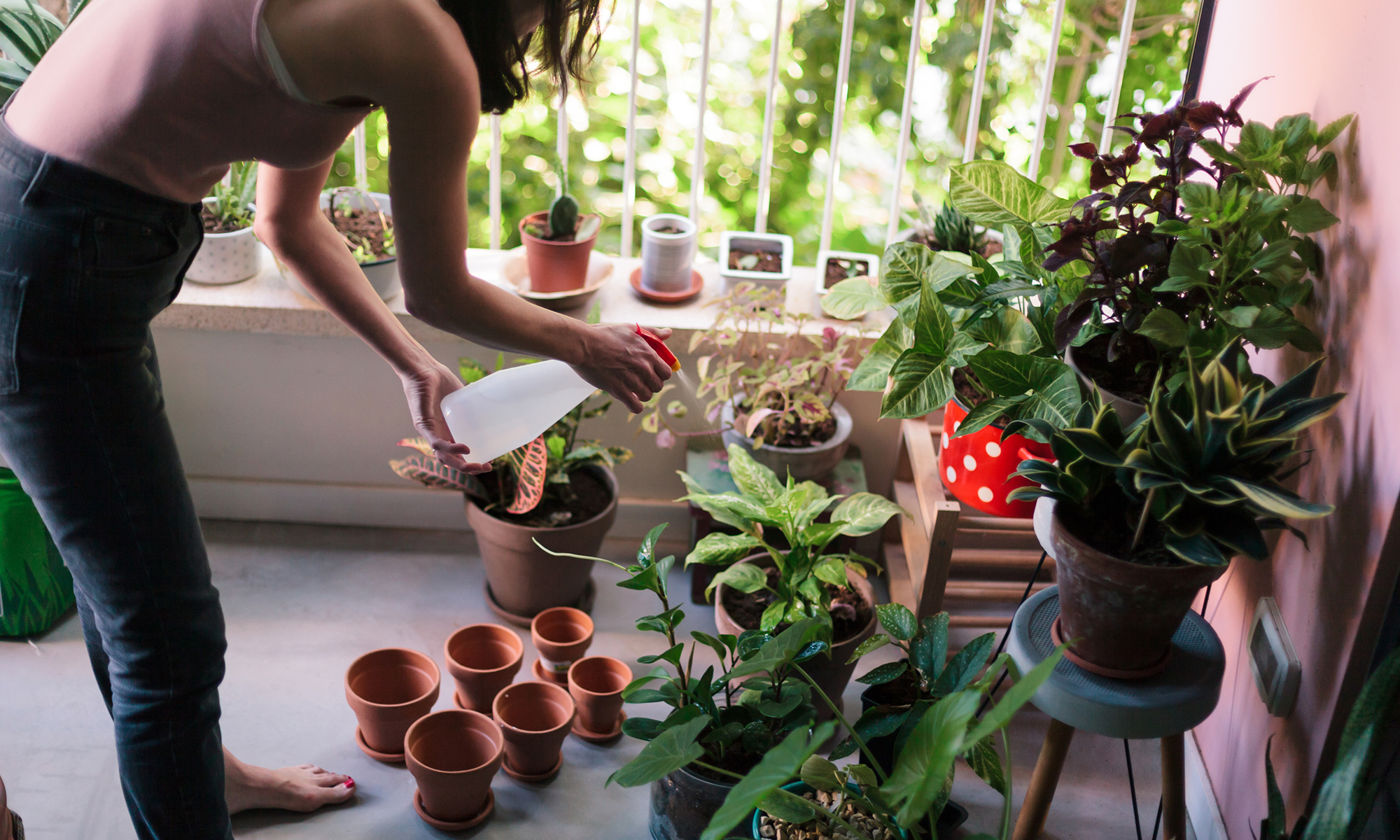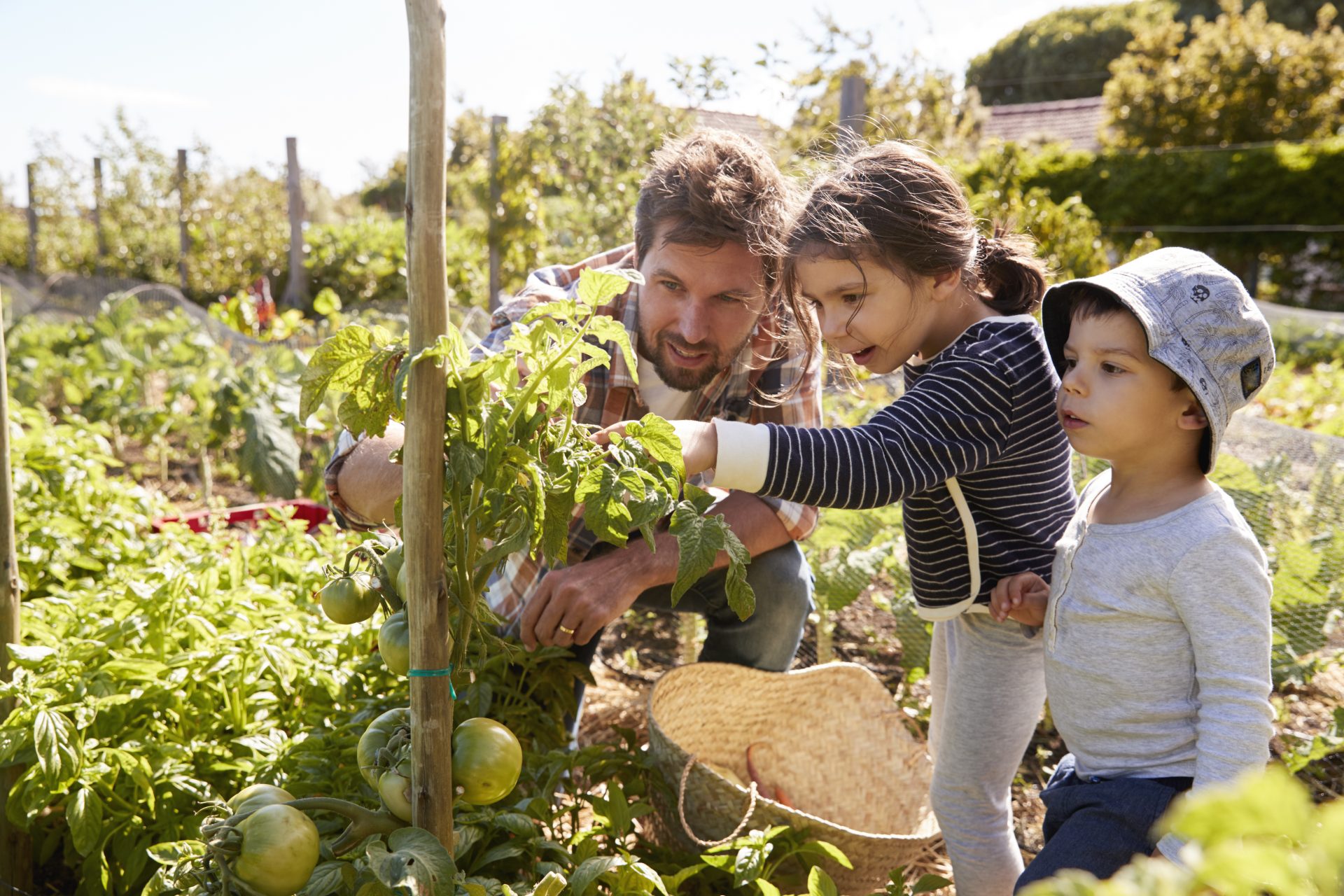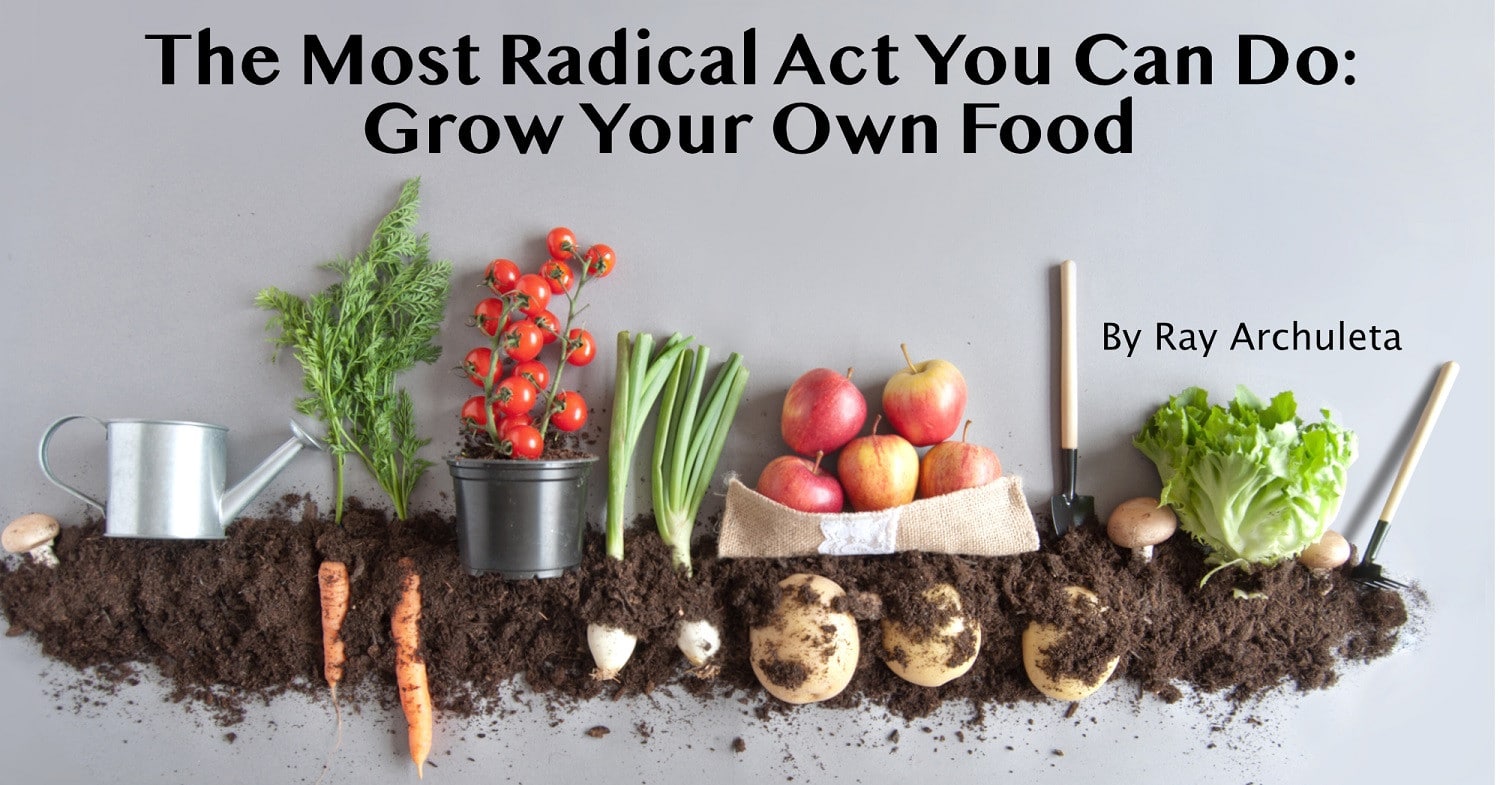Start with choosing the right location and preparing the soil. Plant seeds or seedlings and water regularly.
Growing your own food is a rewarding and sustainable practice. You gain control over what you eat and reduce your carbon footprint. Start by selecting a sunny spot in your garden or using containers if space is limited. Prepare the soil by adding compost and ensuring proper drainage.
Choose crops suited to your climate and season. Plant seeds or seedlings, spacing them correctly. Water consistently and keep an eye out for pests. Use organic methods to manage weeds and enrich the soil. With patience and care, you’ll enjoy fresh, homegrown produce.

Credit: ideas.ted.com
Choosing The Right Space
Growing your own food starts with picking the perfect spot. The right space can make a big difference in your garden’s success. Here, we’ll look at the key factors to consider.
Assessing Sunlight
Plants need sunlight to grow. Most vegetables need 6-8 hours of direct sunlight daily. Use a sunlight calculator to check your garden’s exposure. Observe your yard at different times to see where the sun hits. Avoid shaded areas under big trees or buildings.
Soil Quality And Preparation
Good soil is the foundation of a healthy garden. Test your soil to know its pH level and nutrient content. You can buy a soil test kit or send samples to a local lab.
- If the soil is too acidic, add lime to balance it.
- If the soil is too alkaline, add sulfur to lower the pH.
Preparing the soil involves removing rocks, weeds, and debris. Till the soil to a depth of 12 inches for better root growth. Mix in compost or organic matter to enrich the soil.
| Soil Type | Characteristics | What to Add |
|---|---|---|
| Clay | Heavy and compact | Sand, compost |
| Sandy | Drains quickly | Compost, peat moss |
| Loamy | Balanced texture | Organic matter |
Use raised beds if the soil quality is poor. Raised beds allow better control over soil conditions. They also improve drainage and can reduce weeds.

Credit: foodprint.org
Selecting Your Crops
Choosing the right crops is essential for a successful home garden. The right selection ensures you get fresh produce and a rewarding experience. In this section, we will explore the best crops for beginners and seasonal considerations.
Best Crops For Beginners
Starting a garden can be overwhelming. Choosing easy-to-grow crops can make it easier. Here are some beginner-friendly crops:
- Tomatoes: They grow well in various conditions and yield high.
- Lettuce: Quick-growing and perfect for salads.
- Radishes: They grow fast and need minimal care.
- Zucchini: High-yielding and versatile in the kitchen.
- Herbs: Basil, mint, and parsley grow easily in pots.
Seasonal Considerations
Understanding the seasons is crucial for successful gardening. Different crops thrive in different seasons. Here’s a guide:
| Season | Best Crops |
|---|---|
| Spring | Peas, spinach, radishes |
| Summer | Tomatoes, cucumbers, beans |
| Fall | Broccoli, kale, carrots |
| Winter | Garlic, onions, lettuce |
Planting crops in the right season ensures better growth and yield. It also reduces the risk of pests and diseases.
Gathering Essential Tools
Growing your own food can be a fun and rewarding experience. To get started, you need the right tools. Having the right tools makes gardening easier and more enjoyable. Below, we will explore the basic gardening tools and irrigation supplies you need.
Basic Gardening Tools
Basic gardening tools are essential for planting, digging, and maintaining your garden. Here is a list of some must-have tools:
- Shovel: Great for digging holes and moving soil.
- Rake: Helps in leveling soil and removing debris.
- Hoe: Ideal for weeding and loosening soil.
- Hand Trowel: Perfect for small planting jobs and digging.
- Pruning Shears: Useful for trimming and cutting plants.
- Garden Gloves: Protects your hands from dirt and injuries.
Irrigation Supplies
Proper irrigation is crucial for a healthy garden. Here are some essential irrigation supplies:
- Garden Hose: A flexible tube to water plants.
- Watering Can: Great for watering small areas.
- Sprinkler: Distributes water evenly over a large area.
- Drip Irrigation System: Provides water directly to the plant roots.
- Soaker Hose: Slowly waters the plants at ground level.
Having these tools will make your gardening tasks easier. They help you to care for your plants effectively. Start gathering these essential tools and enjoy your gardening journey.
Preparing The Soil
Growing your own food starts with healthy soil. The quality of your soil impacts plant growth, yield, and health. Preparing the soil involves several key steps to ensure your garden thrives. Let’s explore some important aspects of soil preparation.
Testing Soil Ph
Soil pH affects nutrient availability. Most vegetables grow well in soil with a pH between 6.0 and 7.0. Testing your soil’s pH helps you understand its current state. You can use a home testing kit or send a sample to a lab. Follow these steps to test your soil pH:
- Collect soil samples from different garden areas.
- Mix the samples in a clean container.
- Follow the test kit’s instructions.
- Record the pH level for future reference.
Adjusting the pH ensures your plants get the nutrients they need. If your soil is too acidic, add lime. If it’s too alkaline, add sulfur.
Adding Nutrients
Plants need nutrients to grow strong and healthy. Organic matter like compost enriches the soil. Add compost to your garden beds to improve soil structure. Follow these tips for adding nutrients:
- Spread a 2-3 inch layer of compost on the soil surface.
- Mix the compost into the top 6 inches of soil.
- Use well-rotted manure for additional nutrients.
- Consider using organic fertilizers for a nutrient boost.
Regularly adding nutrients keeps your soil fertile. Healthy soil leads to abundant harvests and happy plants.
Planting Your Seeds
Growing your own food starts with planting seeds. This step is crucial for a successful garden. You need to choose the right seeds and plant them correctly. Let’s dive into the details.
Seed Selection
Choosing the right seeds is very important. You should pick seeds that grow well in your area. Check the seed packets for information. Look for:
- Climate suitability
- Growth time
- Organic or non-GMO
Local garden stores often have seeds that grow well in your region. You can also ask for recommendations from experienced gardeners.
Proper Planting Techniques
Planting seeds correctly helps them grow into strong plants. Follow these steps:
- Prepare the soil: Use rich, loose soil. Remove rocks and weeds.
- Plant at the right depth: Read the seed packet for proper depth.
- Space the seeds: Give each seed enough room to grow. Follow spacing guidelines on the packet.
- Water gently: Use a light spray to moisten the soil.
- Label your seeds: Use markers to remember what you planted.
Here’s a quick reference table for proper planting techniques:
| Plant | Depth | Spacing |
|---|---|---|
| Tomatoes | 1/4 inch | 18-24 inches |
| Carrots | 1/2 inch | 1-2 inches |
| Lettuce | 1/8 inch | 6-12 inches |
With these tips, your seeds will have a great start. Happy planting!

Credit: soilhealthacademy.org
Watering And Fertilizing
Growing your own food requires attention to watering and fertilizing. These steps ensure your plants thrive and produce abundant crops. Below, we discuss effective watering strategies and choosing the right fertilizer.
Effective Watering Strategies
Proper watering is crucial for plant health. Different plants have unique watering needs. Here are some effective strategies:
- Consistent Schedule: Water your plants at the same time daily.
- Morning Watering: Water in the morning to prevent evaporation.
- Soil Moisture: Check soil moisture before watering. Insert your finger 2 inches deep. If it feels dry, it’s time to water.
- Drip Irrigation: Use drip irrigation systems for efficient water use.
Make sure to avoid overwatering. Too much water can damage roots. Use mulch to retain soil moisture.
Choosing The Right Fertilizer
Plants need nutrients to grow well. Choosing the right fertilizer is key. Here’s a simple guide:
| Type of Fertilizer | Best For | Application Tips |
|---|---|---|
| Organic Fertilizer | Vegetables and fruits | Apply once a month |
| Compost | All plants | Mix into soil before planting |
| Liquid Fertilizer | Herbs and flowers | Use every two weeks |
Read labels carefully. Follow the instructions for best results. Over-fertilizing can harm your plants. Use fertilizer sparingly.
Managing Pests And Diseases
Growing your own food is rewarding but managing pests and diseases can be challenging. This section will help you understand how to protect your garden from common threats. By knowing what to look for and using natural methods, you can keep your plants healthy and thriving.
Common Garden Pests
Some pests are more common than others in home gardens. Below is a table showing the most frequent pests and the damage they cause:
| Garden Pest | Damage |
|---|---|
| Aphids | Suck sap from plants, causing yellow leaves |
| Caterpillars | Chew holes in leaves and fruits |
| Slugs and Snails | Leave slime trails and eat leaves |
| Spider Mites | Cause tiny yellow spots on leaves |
Natural Pest Control Methods
Using natural methods to control pests is safe and effective. Here are some easy ways to protect your garden:
- Neem Oil: Spray neem oil on plants to repel insects.
- Companion Planting: Plant herbs like basil and mint to deter pests.
- Diatomaceous Earth: Sprinkle around plants to kill soft-bodied insects.
- Hand-Picking: Remove larger pests like caterpillars by hand.
These methods help keep your garden healthy without harmful chemicals.
Harvesting Your Produce
Growing your own food is rewarding. Harvesting is the most exciting part. Knowing when and how to pick your produce ensures the best taste and nutrition.
Signs Of Ripeness
Identifying the right time to harvest is crucial. Here are common signs:
- Tomatoes: Look for a rich, deep color. They should be firm but yield slightly to pressure.
- Carrots: The tops should be bright green. The carrot should be at least 1/2 inch in diameter.
- Zucchini: Harvest when they are about 6-8 inches long. Larger zucchinis can be tough.
- Peppers: Wait until they reach their full color. They should be firm and glossy.
Best Harvesting Practices
Use the right techniques to avoid damaging your plants:
- Use sharp tools: Dull tools can tear and damage plants. Clean and sharpen your scissors or knives regularly.
- Harvest in the morning: Plants are most hydrated. The produce is crisper and juicier.
- Handle gently: Avoid bruising fruits and vegetables. Handle them with care to keep them fresh longer.
- Store properly: Different produce has different storage needs. Store root vegetables in a cool, dark place. Refrigerate leafy greens.
Following these guidelines ensures you enjoy the freshest, most flavorful produce from your garden.
Frequently Asked Questions
What Are The Benefits Of Growing Your Own Food?
Growing your own food ensures fresh, organic produce. It saves money, reduces carbon footprint, and provides physical exercise. Plus, it’s rewarding.
How Do I Start A Vegetable Garden?
Begin by selecting a sunny spot and preparing the soil. Choose easy-to-grow vegetables and plant seeds or seedlings. Water regularly.
What Vegetables Are Easiest To Grow?
Tomatoes, lettuce, and radishes are among the easiest to grow. They require minimal care and grow quickly, ideal for beginners.
How Much Space Do I Need For A Garden?
Even a small balcony can suffice. Container gardening or raised beds are great options for limited space.
Conclusion
Growing your own food offers numerous benefits. It’s healthier, cost-effective, and environmentally friendly. With the right tools and knowledge, anyone can start a home garden. Embrace the journey of self-sustainability. Begin small and gradually expand. Soon, you’ll enjoy fresh, homegrown produce.
Happy gardening!
